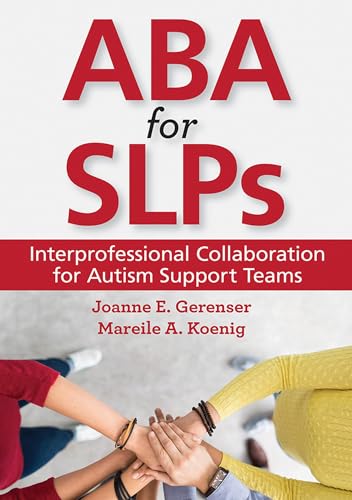ABA for SLPs: Interprofessional Collaboration for Autism Support Teams | 1 Edition

ISBN-13: 9781681252056
the top textbook retailers.
View all Prices by Retailer
Details about ABA for SLPs: Interprofessional Collaboration for Autism Support Teams:
To help ensure the best outcomes for learners with autism spectrum disorder, speech-language pathologists (SLPs) and behavior analysts (Bas) need to work together to support positive behavior and effective communication. This book provides SLPs with a clearer understanding of applied behavior analysis (ABA)—and bridges the gap between the two fields with a comprehensive plan for collaboration. An important new addition to courses in speech-language pathology, this textbook clears up the myths and misconceptions surrounding ABA and builds a clear path to interprofessional practice between SLPs and Bas. Through chapters co-authored by practitioners from both disciplines, speech-language pathologists will learn how to move past ABA stereotypes and controversies, incorporate the best ABA-based practices into their work- and break down the barriers to productive collaboration with Bas. An essential part of every future SLP's education—and an eye-opening guide for practicing professionals—this timely text shows how experts from two vital fields can learn from each other and work as a seamless team to support better lives for people with autism. READ THIS BOOK TO: Discover the benefits of collaborating with Bas, including practical strategies for connecting with them and for learning from their expertise Learn fundamental features of ABA, including its key terminology, core behavioral teaching components, and data collection methods Receive recommendations for applying the interprofessional education and interprofessional practice model (IPE/IPP) Learn about proven ABA-based interventions, including the analysis of verbal behavior, Pivotal Response Treatment, Incidental Teaching, and the Picture Exchange Communication System Learn how to integrate ABA with speech-language pathology in critical areas, including assessment, goal-setting, and behavior intervention STUDENT-FRIENDLY FEATURES: Learning objectives, reflection questions, vignettes, and a helpful glossary make it easy for SLPs to absorb and apply new terminology and strategies.


